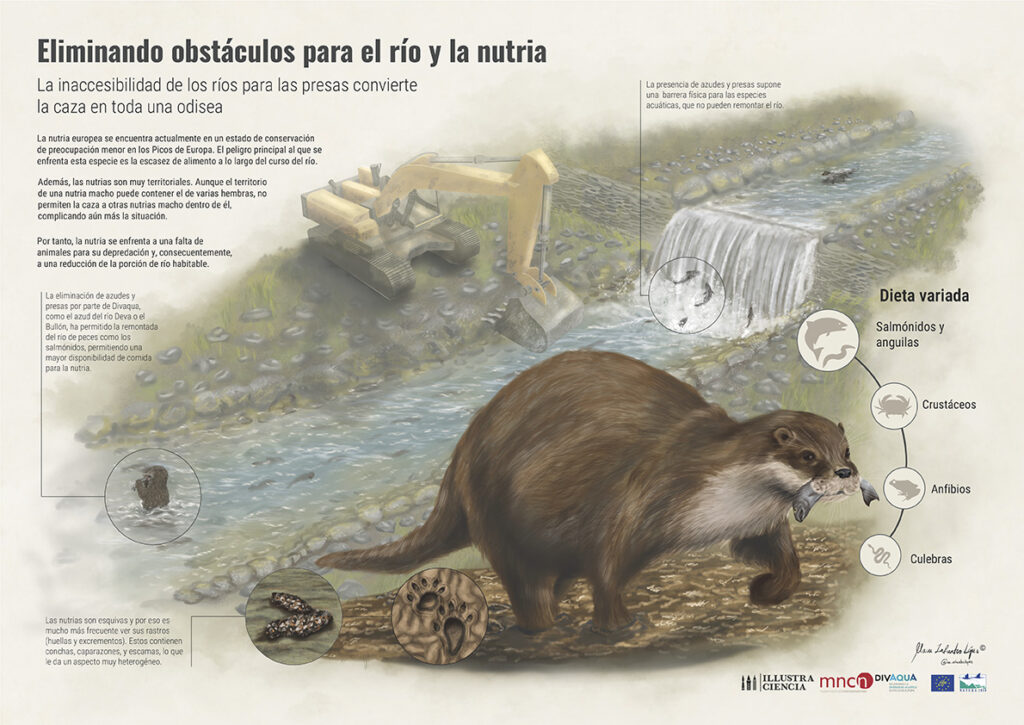The Eurasian otter currently has a least-concern conservation status in the Picos de Europa. The main danger faced by this species is food scarcity along the course of the river. Otters are also highly territorial. Although the territory of a male otter may cover the territory of several females, they don’t allow other male otters to hunt inside it, which further complicates the situation. The otter is therefore faced by a lack of animals for predation and a consequent reduction in the habitable portion of the river.
